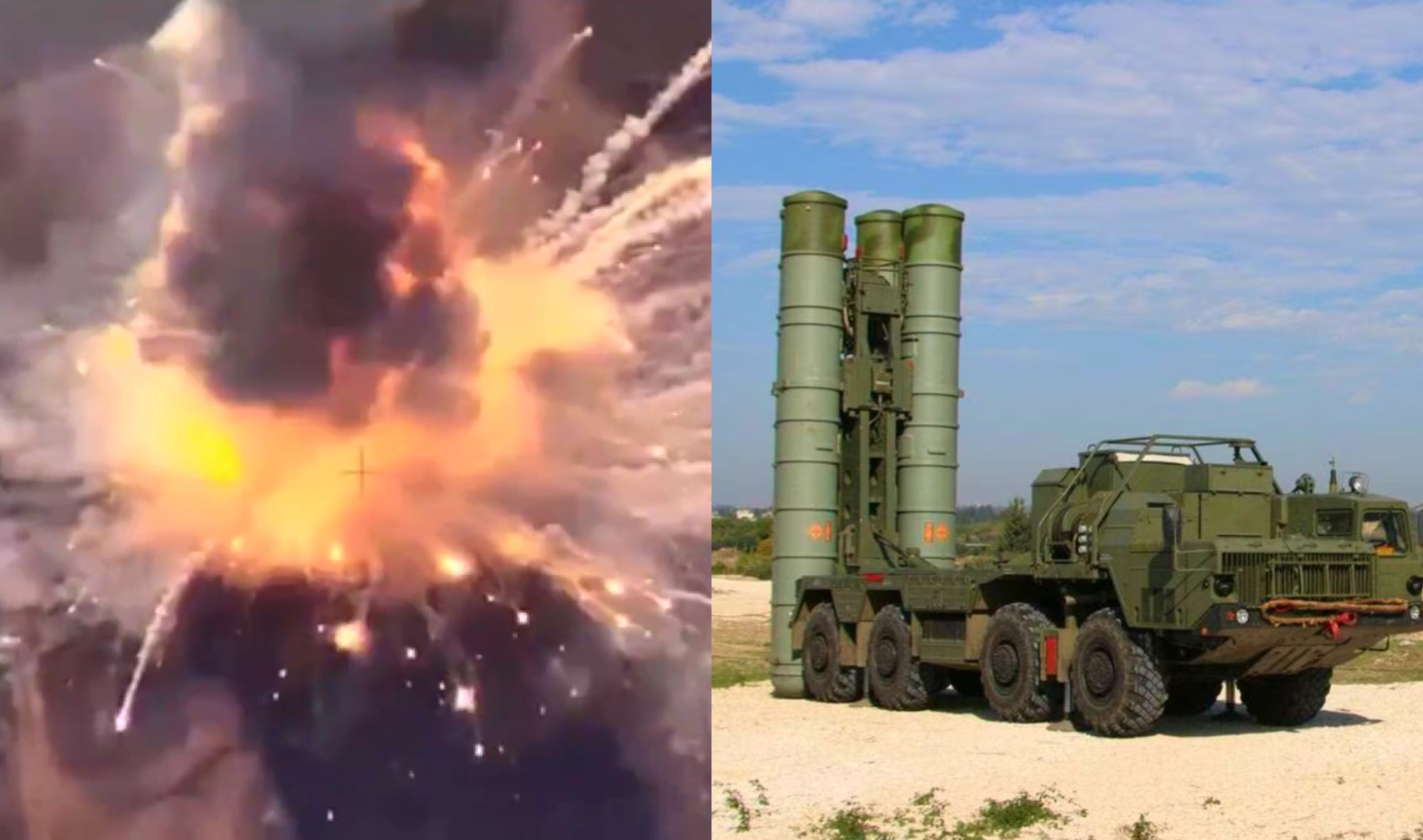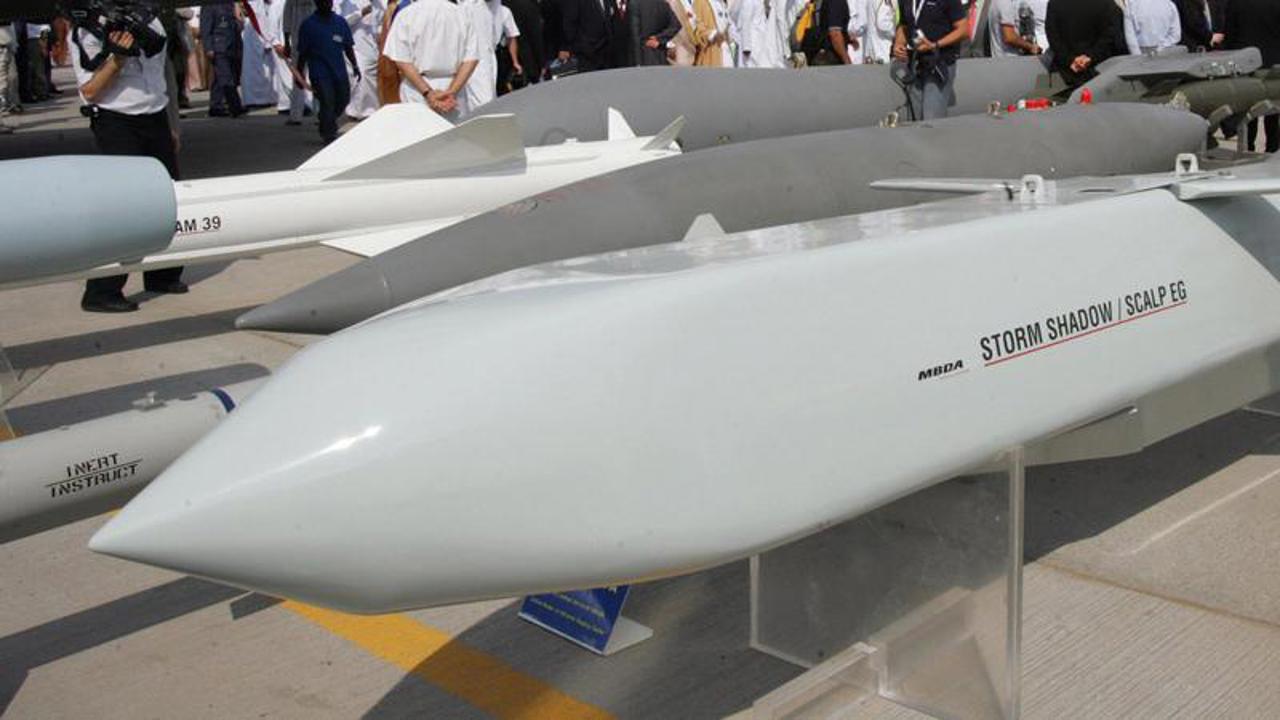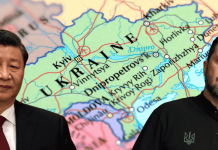Ukraine launched a new attack on the Kerch Strait connecting Crimea and the Russian mainland, reportedly damaging a warship while firing eight Storm Shadow air-launched cruise missiles (ALCMs).
Before that, towards the end of October, reports also claimed Ukraine destroyed four S-400 systems, possibly using the newly acquired Army Tactical Missile System (ATACMS) from the United States (US).
The early November attacks on the Kerch Strait specifically displayed the Ukrainian air force’s new tactics meant to overwhelm and divert Russian air defense’s attention, Russian experts have said.
This suggests a concerted effort towards targeting the S-400 system, which shot down several Ukrainian aircraft, primarily since it worked in conjunction with an A-50 Airborne Warning and Control System (AWACS) aircraft.
The strikes on the S-400 are meant to force Russia to pull further away from the frontlines and upset many of its tactical battlefield calculations that revolve around the advanced surface-to-air missile (SAM) system.
This has not only degraded its air defense capability but will force changes to operational deployments that would upset many battlefield calculations, experts said. Lastly, it has exposed flaws and weaknesses in the much-vaunted air defense systems.
Ukraine Destroys At Least Three S-400 Systems
According to the UK Ministry of Defense (MoD) intelligence update on November 2, Russia has “likely lost at least four long-range Surface-to-Air Missile (SAM) launchers to Ukrainian strikes” in the preceding week. It quoted Russian media reports on October 26 reporting the loss of three “SA-21 launchers” in the Luhansk region, with Ukrainian sources reporting “additional Russian air defense losses in Crimea.”

The British Ministry of Defense (MoD) releases periodic assessments of new battlefield trends and emerging patterns in the Russia-Ukraine war. “Russia has long prioritized ample, high-tech, long-range SAM systems as a key component of its military strategy,” the UK MoD said.
It pointed out how the loss indicates that Russia’s “Integrated Air Defense System continues to struggle against modern precision strike weapons and will likely increase the strain on remaining systems and operators.” Russia might try to replace the destroyed systems with S-400s from other regions, which “will weaken its air defenses in other operational areas.”
As for the kind of weapon used to hit the S-400, Business Insider quoted a Russian Telegram channel saying they used the ATACMS, particularly the M39 missile, a 150-kilometer range ‘area weapon’ that scatters 950 M74 submunitions over a vast expanse. Forbes said the M39’s first victims were 21 Russian helicopters in an October 17 strike “in Luhansk and outside Berdyansk in Russian-occupied southern Ukraine.”
Videos on X (formerly Twitter) showed smoke rising from Luhansk, claiming this was an S-400 system. Earlier pictures from October 26 also showed a detached engine of the M39 missile fired from the ATACMS launcher in the settlement of Bilorichensk, Lutuginsky District, temporarily occupied Luhansk Oblast. This proved the use of the missile on Russian targets.
Attack On Kerch & Berdyansk
November 4 meanwhile saw a “successful Storm Shadow strike” on Kerch, proven by satellite images from Planet Labs, claiming a docked Russian warship was damaged. A Yahoo News report quoted a Ukrainian naval officer who identified the ship as a Project 22800 Karakurt-class missile corvette.
The Karakurt can carry eight Kalibr cruise missiles, which makes “neutralizing such a ship significant for Ukraine’s security,” said Reserve Captain 1st Rank Andriy Ryzhenko. “This ship was already in the dock and was being repaired because it was supposed to be delivered in December. It is still afloat, but the upper part of the ship is noticeably damaged,” Ryzhenko said.

The ship was docked at the Zaliv shipbuilding plant, which Ukrainian Air Force commander Lt Gen Mykola Oleshchuk called the Russian Black Sea Fleet’s “most modern warships.”
Rybar, the leading Russian Open Source Intelligence (OSINT) and military analysis forum said it had anticipated this Ukrainian strike at Kerch following “Ukrainian drone attacks on Crimea (for) two days in a row.”
New Tactics
Explaining the tactics behind the attack, Rybar said on its Telegram channel that four Su-24M bombers from the Dnepropetrovsk and Zaporizhzhia regions launched eight Storm Shadow/SCALP cruise missiles in the direction of Crimea.
“To distract and overload air defense systems in the Kherson and Zaporizhzhia regions, MiG-29 and Su-27 fighters fired several HARM anti-radar missiles and AGM-160 MALD decoys.”
Two MiG-31BM fighters took off from the Belbek air base in Crimea to intercept them when the Ukrainians initiated a “diversionary strike on Cape Tarkhankut with a Neptune anti-ship missile, which was shot down by a MiG northwest of the peninsula.”
Meanwhile, eight Storm Shadows were flying into the Sea of Azov, where the S-400 and Pantsir-S1 air defense systems detected them. The Storm Shadows then “changed” their direction, route, and altitude in a “snake maneuver.” Six Storm Shadows were shot down by the 31st Division 50 km north of the Crimean Bridge and over Kerch.
“One missile was shot down directly over the Zaliv plant. The fragments had previously caused damage to the ship next to the pier (although the footage available on the Internet shows a hit on one of the workshops). Another one fell into the water near the plant,” Rybar said.
The forum confirmed the partial success of the Storm Shadow strike, though it was the missile debris and fragments that damaged the Karakurt missile corvette.
⚡️A pair of detached engines of the MGM-140 🇺🇦ATACMS cluster missile were found yesterday in the settlement of Bilorichensk, Lutuginsky District, temporarily occupied Luhansk Oblast pic.twitter.com/4xGs4zLc3R
— 🇺🇦Ukrainian Front (@front_ukrainian) October 26, 2023
The attack “demonstrated how Ukrainians are trying varying tactics, overloading air defense and distracting with raids from different sides.” Rybar said. It credited the air defense crews for successfully downing the missiles and limiting the destructiveness and effectiveness of Ukrainian attacks.
- The author can be reached at satamp@gmail.com
- Follow EurAsian Times on Google News




